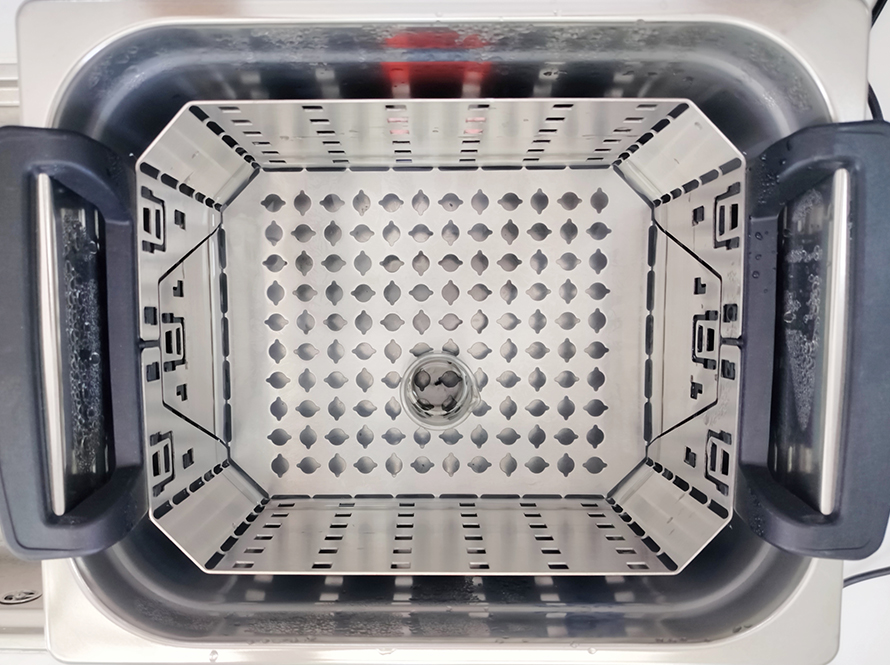
Ultrasonic cleaning is a method of cleaning that uses ultrasonic waves. This technique operates by generating high-frequency sound waves in a liquid medium (usually water or specialized cleaning solutions). Here is a breakdown of the basic working principle and advantages of ultrasonic cleaning:
Working Principle
- Ultrasonic Wave Generation: An ultrasonic generator converts electrical energy into high-frequency sound waves. These waves typically operate at a frequency between 20 kHz and 40 kHz.
- Cavitation: These sound waves create rapidly expanding and collapsing microbubbles within the cleaning liquid. This phenomenon is known as cavitation.
- Microjets: When the bubbles collapse, they produce small, powerful liquid streams called microjets. These microjets effectively dislodge dirt and contaminants from the surface to be cleaned.
Advantages
- Deep Cleaning: Ultrasonic waves can reach microcavities and complex shapes that the cleaning liquid alone cannot.
- Gentle Cleaning: This method can be used on delicate parts because the microjets do not scratch or damage surfaces.
- Speed and Efficiency: It is faster and more efficient compared to traditional cleaning methods.
- Versatility: It is effective on various materials such as metal, plastic, glass, and ceramic.
Applications
- Industrial Cleaning: Used for cleaning industrial components like engine parts, gearboxes, and bearings.
- Medical and Laboratory: Utilized for sterilizing surgical instruments, laboratory equipment, and delicate devices.
- Electronics: Employed for cleaning circuit boards and other electronic components.
- Jewelry: Used for cleaning gold, silver, and gemstones.
Ultrasonic cleaning is a widely used method due to its effectiveness and gentleness in a variety of applications.

